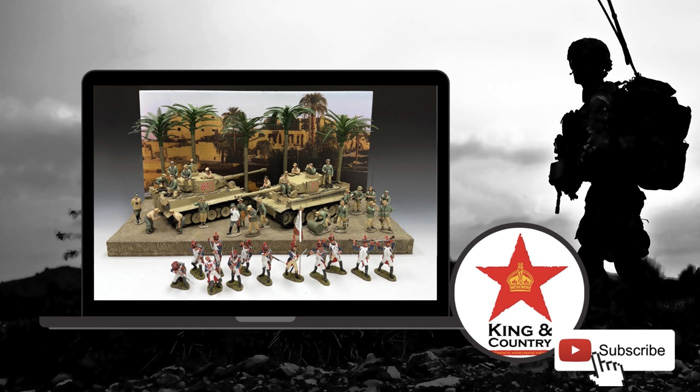DISPATCHES
February 2025
Hi Guys,Welcome as usual, to this month’s ‘DISPATCHES’ which includes quite a number of new releases for TWO of King & Country’s most popular ranges from our long and varied list of historical subject matter…
THE DESERT WAR which was fought across the vast expanse of North Africa between 1940-1943 and…
THE AGE OF NAPOLEON where the armies of the French Emperor marched and battled their way from the sun-scorched pyramids of Egypt to the frozen gates of Moscow before final defeat on the lush, green fields of Waterloo.
1. BEING RELEASED THIS FEBRUARY
A. ‘Afrikan Tigers On The Prowl!’
By late 1942, the fate of the Italian and German forces in North Africa was looking bleak. On November 7, 1942, a large Anglo-American force, three-quarters of which were from the U.S., had successfully landed in Morocco and Algeria.Code-named ‘Operation Torch’ and commanded by Lt. Gen. Dwight D. Eisenhower their aim was to attack the Germans and Italians from the west while the British Eighth Army was advancing from the east thus squeezing the Axis forces out of North Africa entirely.
To avoid this fate there was a rapid build-up of German reinforcements in Tunisia by both air and sea with aircraft and ships from mainland Italy and Sicily arriving daily.
Among the badly-needed reinforcements to the Afrika Korps were several shipments of the new and very heavy Panzerkampfwagen VI tanks better known as ‘The Tiger’.
Eventually a total of 31 Tigers arrived in Tunisia and they were divided among 3 individual heavy tank companies of 9 x Tigers each with the remainder going to 2 battalion staff units.
Ultimately, the presence of this small number of Tigers had little effect on the eventual outcome of the Desert War. However, the battlefield reputation of the Tiger was greatly enhanced by its performance in several battles during the closing months of the campaign where they destroyed more than 150 Allied tanks for the loss of just 9 of their own in action.
BATTLEFIELD PROBLEMS ELSEWHERE
While the Tiger 1 has been called an outstanding design for its time, it was also labelled ‘over-engineered’, using very expensive materials and labour-intensive production methods. In addition, this highly complex machine was constantly hampered by ongoing mechanical reliability issues and, its massive weight of 56 tons, which strained its mechanical systems, resulted in frequent breakdowns. Other negative factors included the tank’s size which made it difficult to operate on Tunisia’s narrow and under-developed road system and, of course, a general lack of adequate fuel and replacement parts.As a result the majority of Tiger 1’s lost and abandoned in Tunisia were caused by technical breakdowns and… lack of fuel!
That being said the reputation of the Tiger 1 among their British and American opponents was sky-high helped along by its powerful 88mm main gun and incredibly thick armour which made it almost impossible to knock-out in open combat. This is what struck fear and terror in the minds of many British and American soldiers and tank crews.
As many K&C collectors know, over the last two years, we have released a total of 3 Tiger 1s… The first was for a ‘Winter Campaign’ followed in 2024 by 2 Tigers fighting in the Battle of Kursk in 1943.
Now, we are introducing our first ‘Desert Tigers’ since 2007 and, once more, they are superb, all-metal diecast models complete with moving wheels and tracks with full suspension and hatches that open and close.
Add to that 3 complimentary crew figures plus a handsome and sturdy full-colour presentation box along with a signed and numbered certificate for each of the 250 sets.
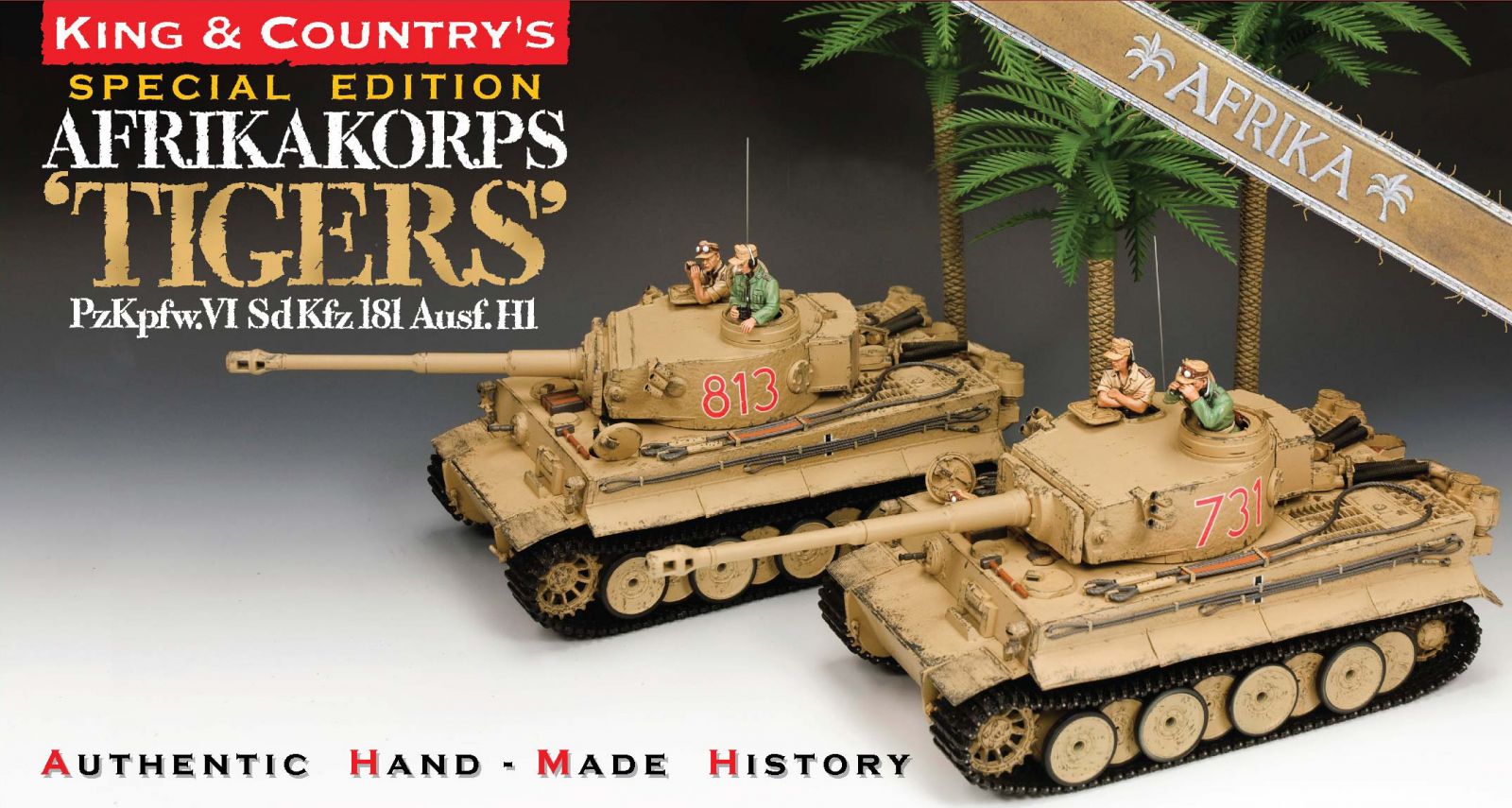
| AK154(Special Edition) Pzkpfw VI ausf. H Tiger 1 #731 Pzkpfw VI ausf. H Tiger 1 By February 1943 the first and second companies of Panzer Abteilung 501 were attached to Panzer-Regiment 7 of the 10th Panzer Division and the tanks were numbered as the regiment’s 7th and 8th companies. |
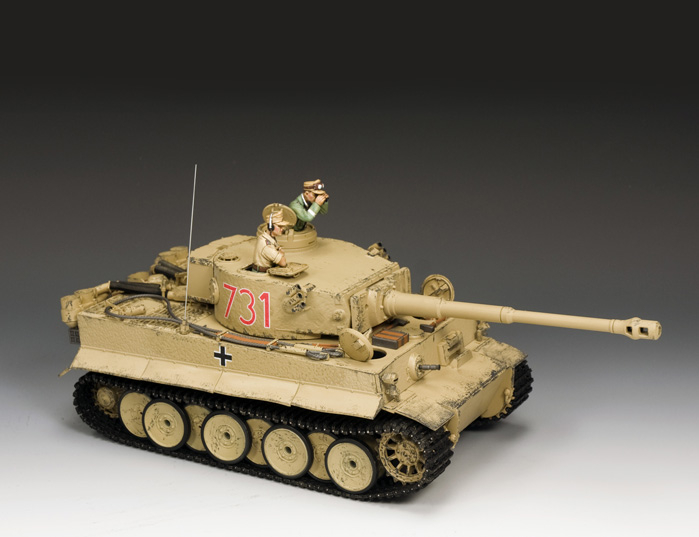 |
| AK155(Special Edition) Pzkpfw VI ausf. H Tiger 1 #813 The second of our two new Tigers belongs to the 8th Company of Panzer-Regiment 7. |
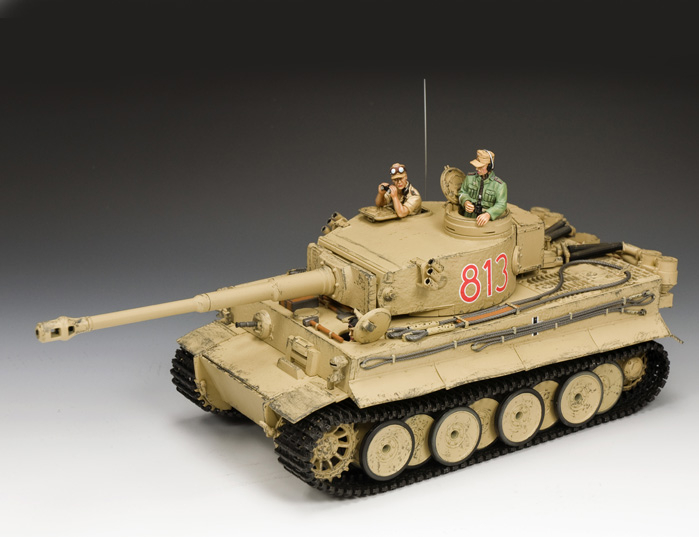 |
In addition, to these ‘Desert Tigers’ we are also releasing 5 sets of Afrika Korps figures to support the tanks…
.jpg)
| AK156 ‘Sitting AK Tankers’ As collectors know Tiger tanks had a crew of 5 men and each of the above models come with 3. So, for those guys who want to complete their crew here are two useful additions, one crewman enjoys a smoke while the other takes a swig of water from his canteen. |
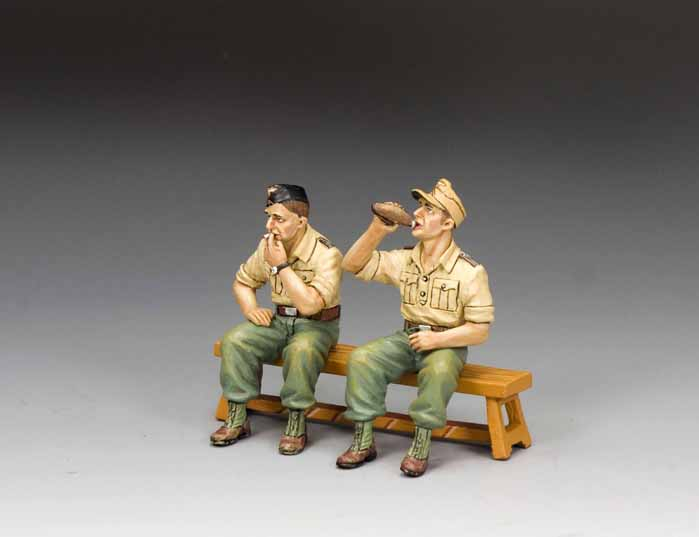 |
| AK157 ‘The AK Tankriders Set’ This 4-man set includes three kneeling and sitting Afrika Korps troopers with Kar. 98 rifles and one standing with a ‘Schmeisser’ MP40 machine pistol. All four of these figures come with no bases in order that they can be placed in different positions on this new Tiger or any of K&C’s other AK ‘Fighting Vehicles’. |
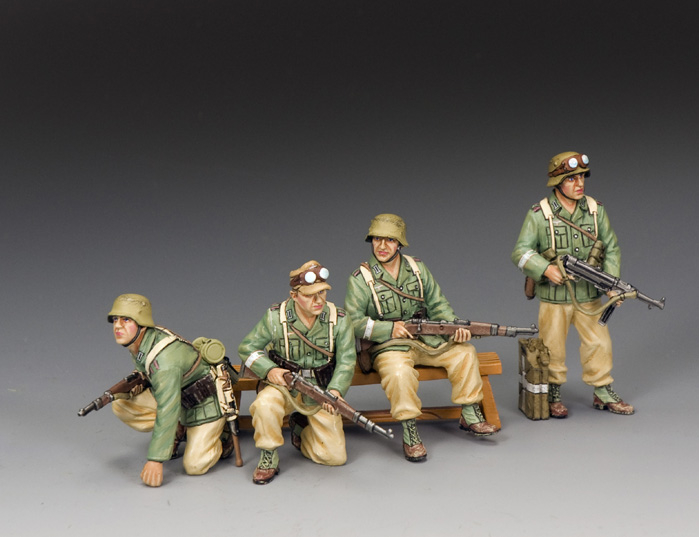 |
| AK158 ‘Standing AK Machine Gunner’ A single AK figure standing with the MG34 Machine Gun, another useful addition. |
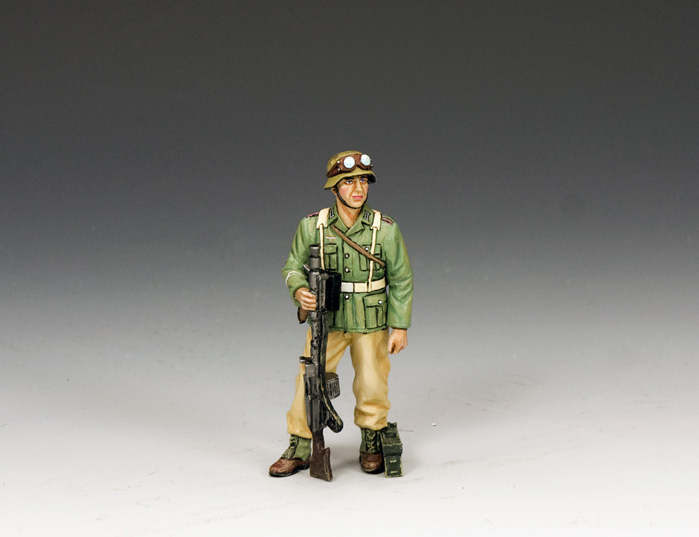 |
| AK159 ‘Two AK Officers’ These two dismounted Afrika Korps tank officers discuss their present situation. |
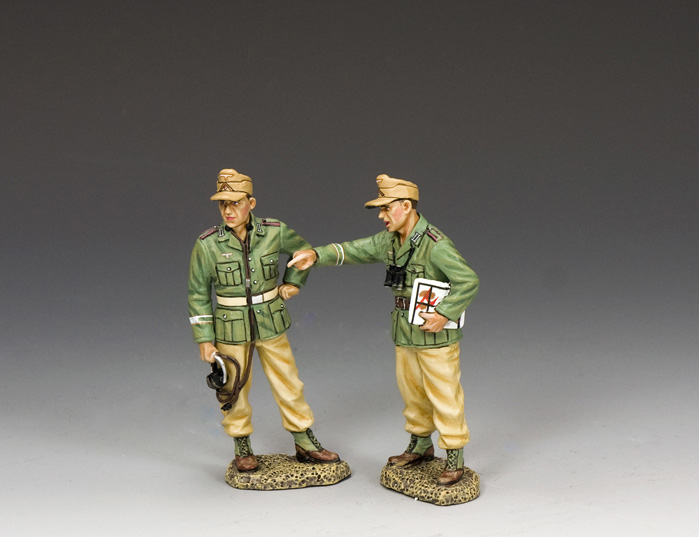 |
| AK160 ‘The Tank Mechanics Set’ Two AK mechanics inspect a potential problem and, hopefully come up with a practical solution. |
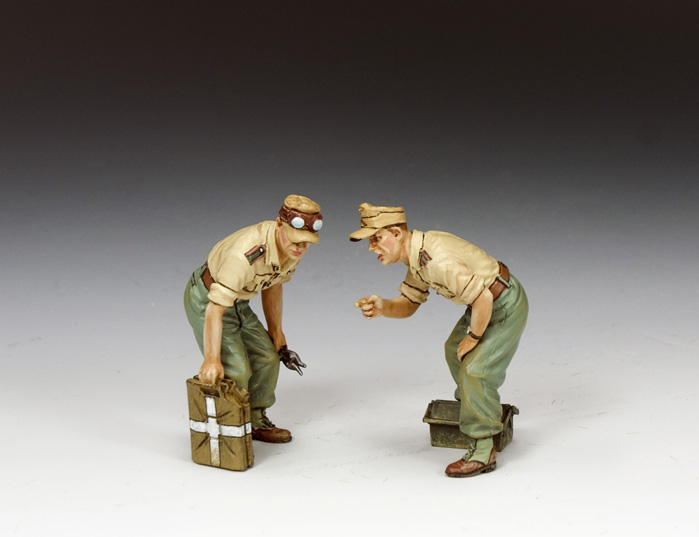 |
AVAILABLE: Early February
B.“VIVE L’EMPEREUR!”
Following the French Revolution of 1789, the system of ‘named’ regiments of the old army was abandoned and replaced by the introduction of a series of large formations called ‘Demi Brigades’.These units usually consisted of two or three battalions, to be known as demi brigades in an attempt to avoid the feudal connotations of the term, ‘Regiment’.
By 1793 this all-new, Revolutionary Army consisted of 196 infantry demi brigades with the bulk being described as… ‘Line Infantry’.
The term ‘Line Infantry’ describes the type of infantry soldiers that made up the vast majority of European land armies from the early 19th century onwards.
For both battle and parade drill, it usually consisted of two to four ranks of foot soldiers drawn up side by side in rigid alignment, thereby maximizing the effect of their massed firepower on the enemy.
Some time later, the term came to be applied to regular regiments ‘of the line’ as opposed to ‘Light Infantry’… skirmishers, militia and other support personnel plus some other categories of infantry not focused on heavy front-line combat.
As mentioned earlier, Line Infantry soon became the most common type of Infantry in European countries with specialists such as Voltigeurs and Grenadiers, formerly elite troops, gradually being absorbed into these new formations.
To successfully perform the Line movements required a large measure of strict discipline and many hours of practice until they became second-nature. During training both drill and corporal punishments were widely used.
During this time the standard French musket was the ‘Charleville’, a .69 calibre weapon that served from 1717 until the mid 1840s.
This weapon could and would often have a separate bayonet attached.
These 12 all-new French Line Infantrymen are dressed in the uniforms of the period from 1805 until 1812 and carry the weapons and equipment of that same time.
They are also just the first installment of this classic 3rd Battalion of the 3rd Regiment of the Line… Another 8 figures, including a ‘Mounted Officer’ are scheduled for release this coming April.
As you can see the term ‘Regiment’ had by this time been reintroduced into Napoleon’s Army.
.jpg)
| NA514 ‘F.L.I. Officer w/Battalion Flag’ Advancing forward flag in one hand, sword in the other. |
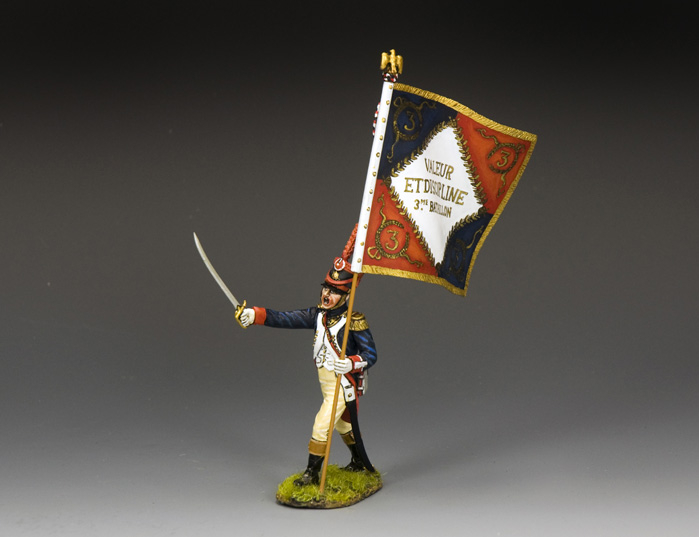 |
| NA515 ‘F.L.I. Loading Musket’ A properly trained French infantryman was expected to be able to fire three volleys a minute. An experienced soldier could hit a man-sized target at 100 yards but anything further required an increasing amount of luck or amazing marksmanship. |
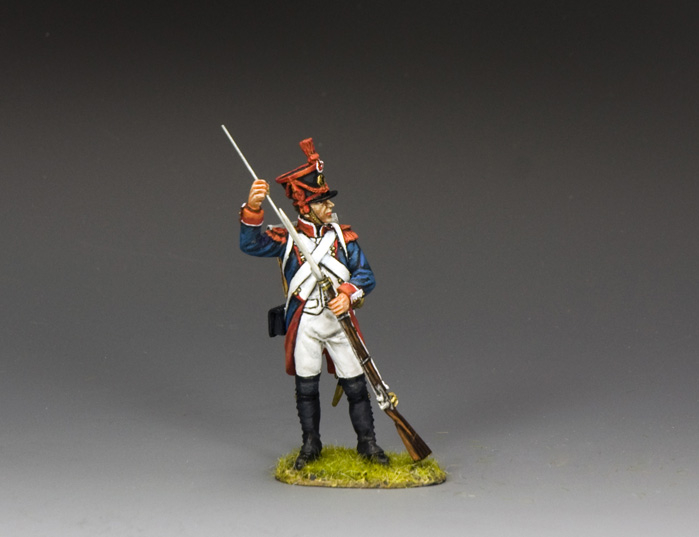 |
| NA516 ‘F.L.I. Casualty of War’ This Line Infantryman has taken a musket ball to the chest and is very unlikely to have survived. The ball itself would penetrate the body causing serious internal damage. However unlike modern bullets these would be no ‘exit wound’ from a musket shot, as the soft lead ball would probably flatten on impact or be diverted from its trajectory within the body causing all kinds of damage. |
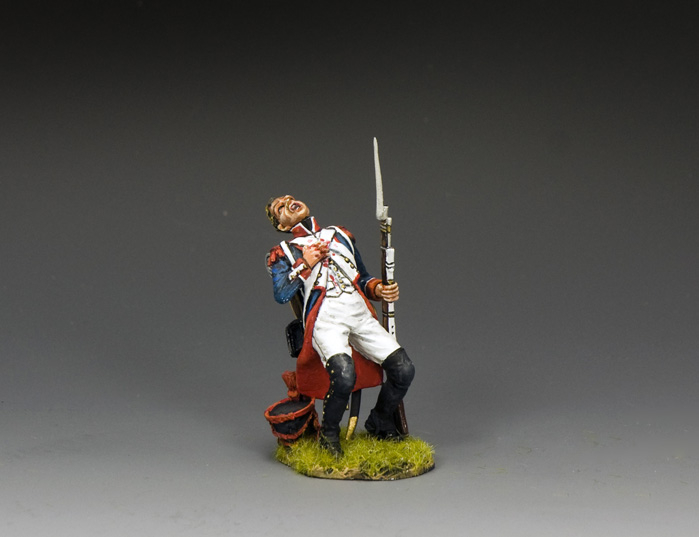 |
| NA517 ‘F.L.I. Shouting Encouragement’ Going into the attack this man calls on his comrades to follow. |
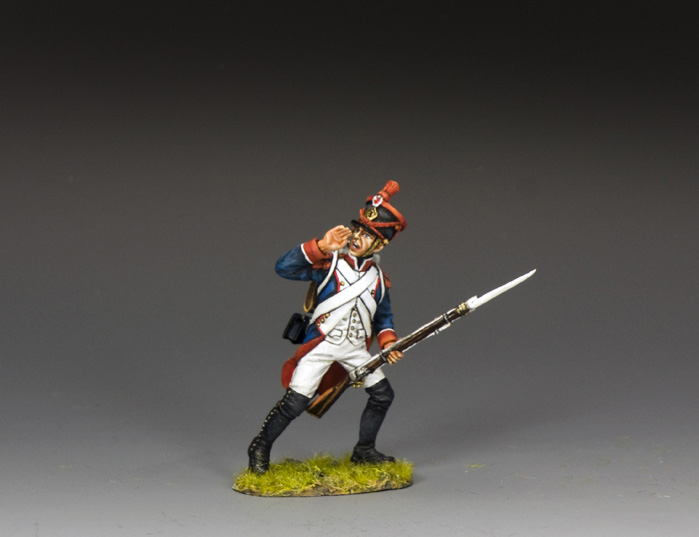 |
| NA518 ‘F.L.I. Reaching for a Fresh Cartridge’ This Line Infantryman having fired a round reaches back to find a fresh cartridge to reload his musket. |
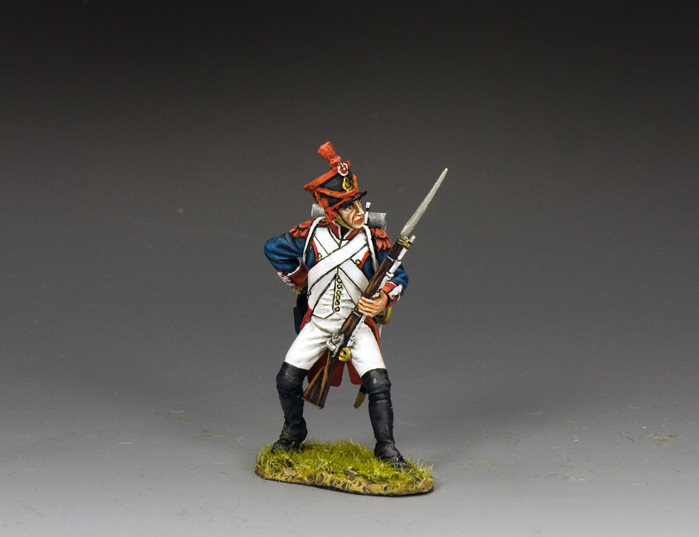 |
| NA519 ‘F.L.I. At The Ready’ Standing four-square with a fully-primed and loaded musket awaiting the order ‘Present’. That order meant level your musket towards the enemy and prepare to aim your weapon. |
 |
| NA520 ‘F.L.I. Standing Firing’ Now, this Line Infantryman is aiming his musket at the approaching enemy. As he sights along the barrel the crosshairs should be no lower than the foe’s waist and no higher than his neck! And always aim at the person opposite of you. Aiming at someone else’s target may waste ammunition. |
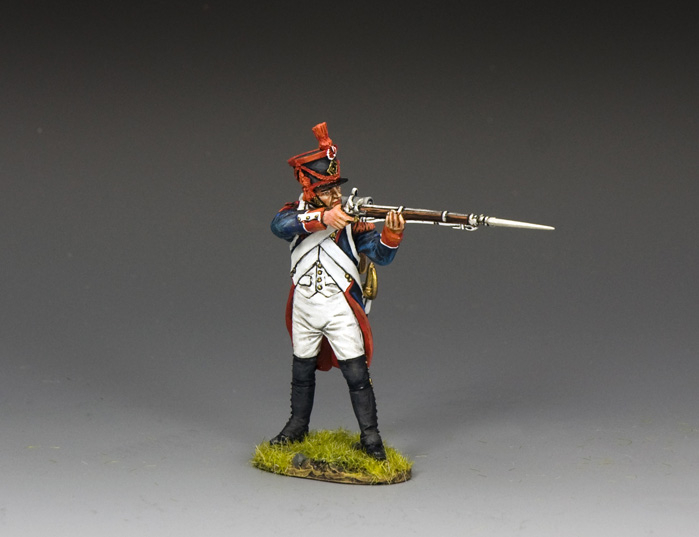 |
| NA521 ‘F.L.I. Kneeling Firing’ As above but now in the kneeling position. |
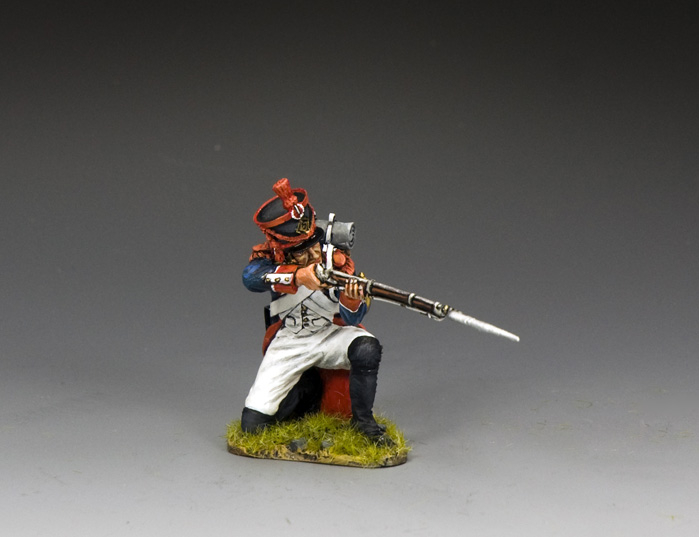 |
| NA522 ‘F.L.I. Thrusting Upwards’ In a defensive situation or formation when being attacked by cavalry… first aim for the horse! |
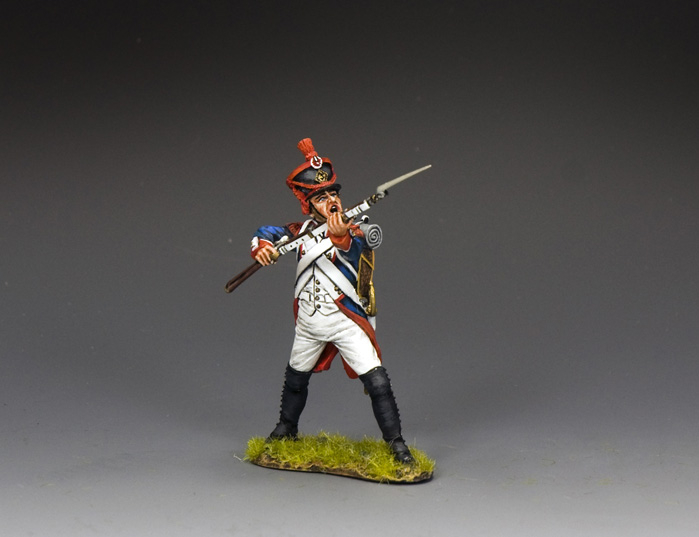 |
| NA523 ‘F.L.I. Stabbing w/Bayonet’ Similar to the previous pose but this time aiming for the man riding the cavalry horse! |
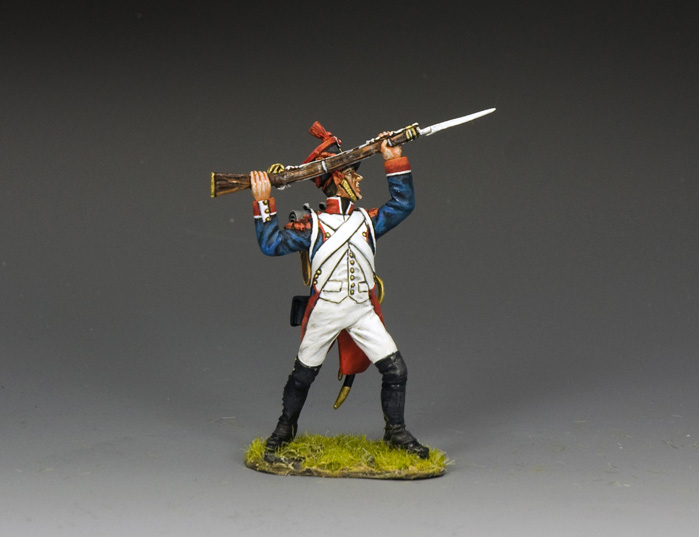 |
| NA524 ‘F.L.I. Drummer Fighting w/Short Sword’ As drummers rarely if ever would carry a musket this Drummer is using his sword to defend himself. |
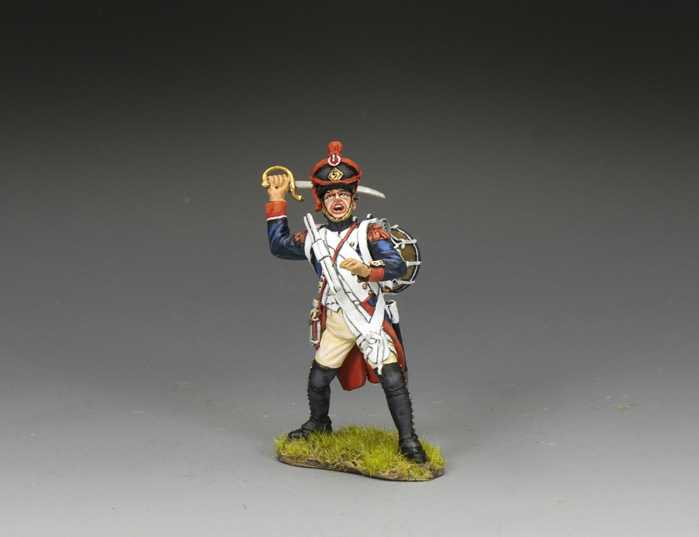 |
| NA525 ‘F.L.I. Musket Butting The Enemy’ After knocking an enemy off his horse this Line Infantryman will follow it up with a swift bayonet thrust. |
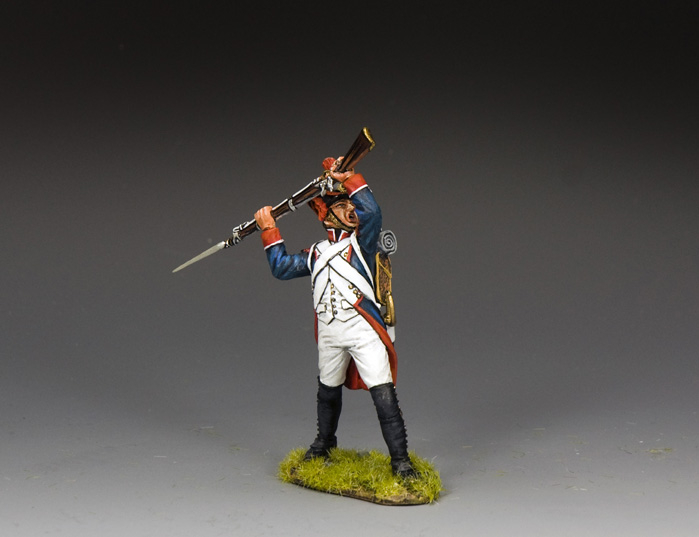 |
2. BEING RETIRED
Not many figures being retired this month but a fair number of fighting vehicles, a pair of Royal Navy Landing Craft and… a nice little Royal Air Force Dispersal Caravan!So here they are…
| DD335 Royal Navy LCVP 1335 |
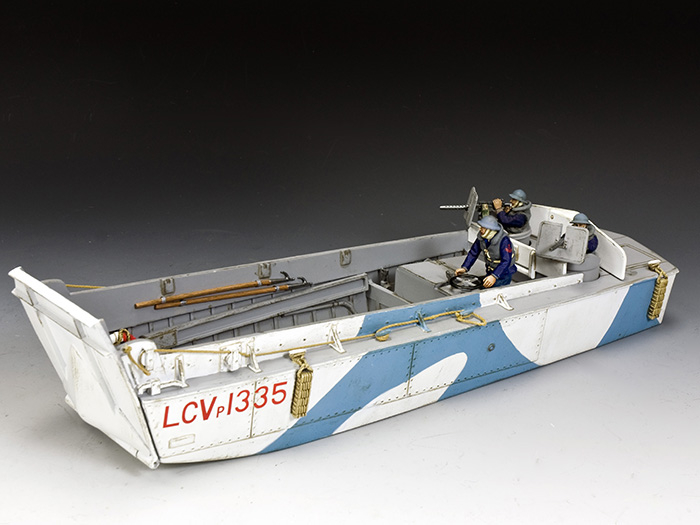 |
| DD336 Royal Navy LCVP 1324 |
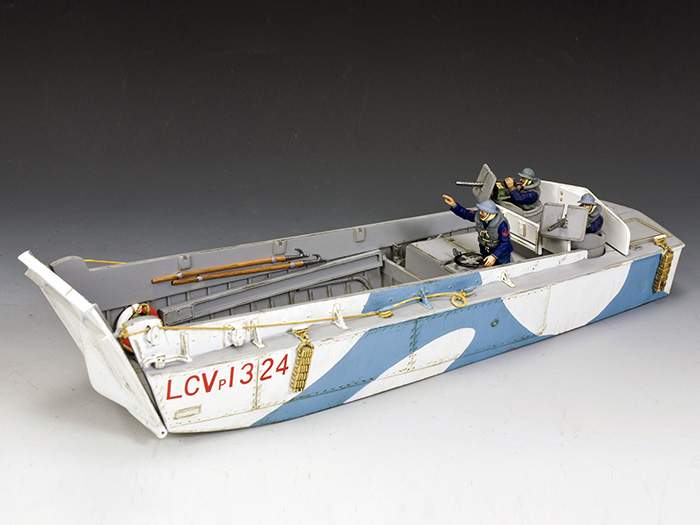 |
| FoB097 Bomb Disposal Morris CS8 | 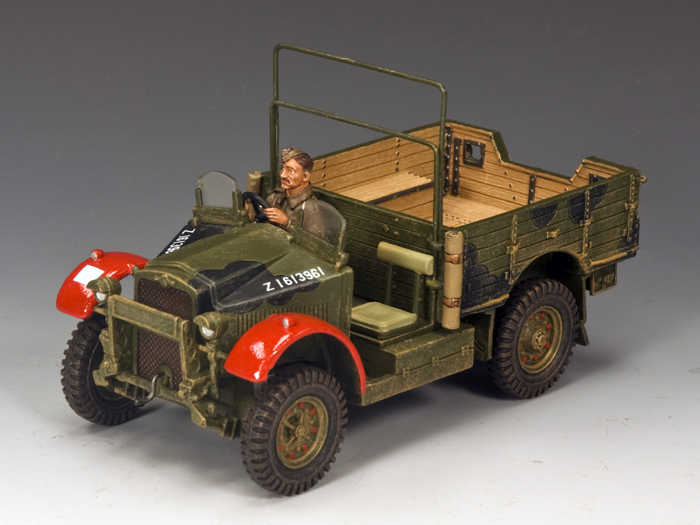 |
| LAH259 Der Fuhrer’s Mercedes Benz W31 Staff Car |
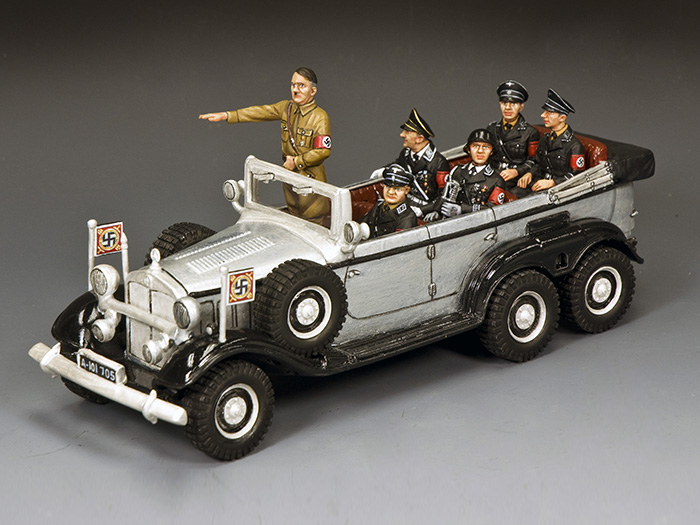 |
| RAF083 The RAF Dispersal Caravan 1940 | 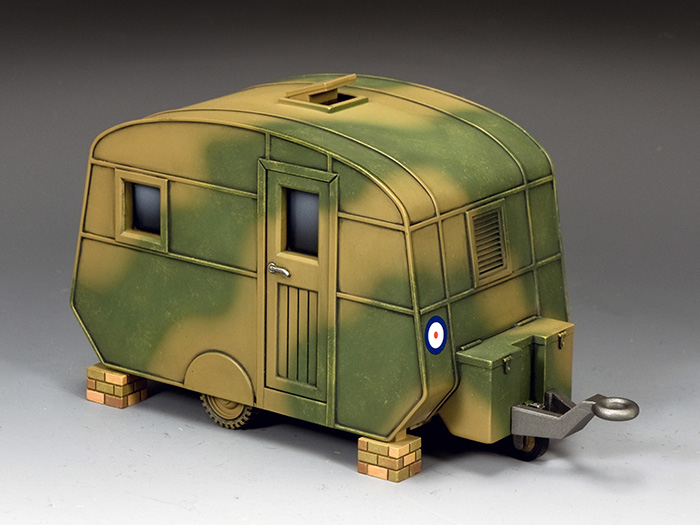 |
| VN097 The Australian Military Police Land Rover | 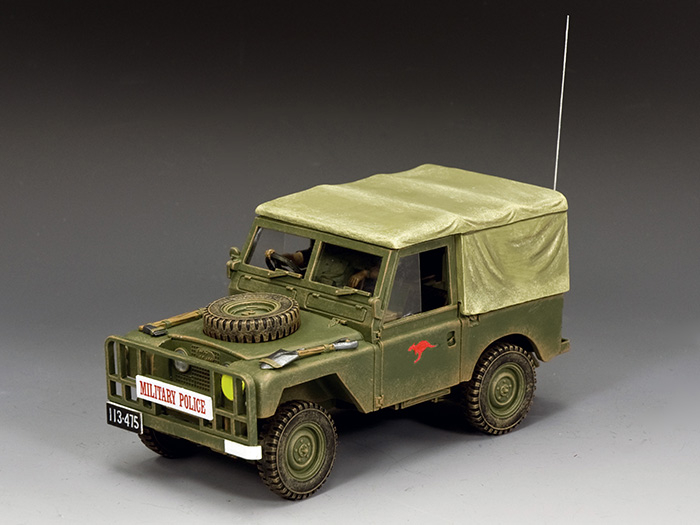 |
| VN118 The Patrol / General Service Land Rover | 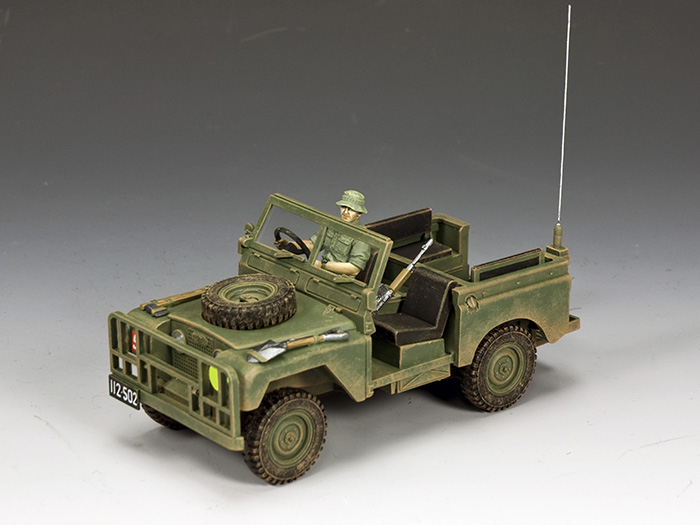 |
| VN140 Australian Army M113 (Two Zero Alpha) | 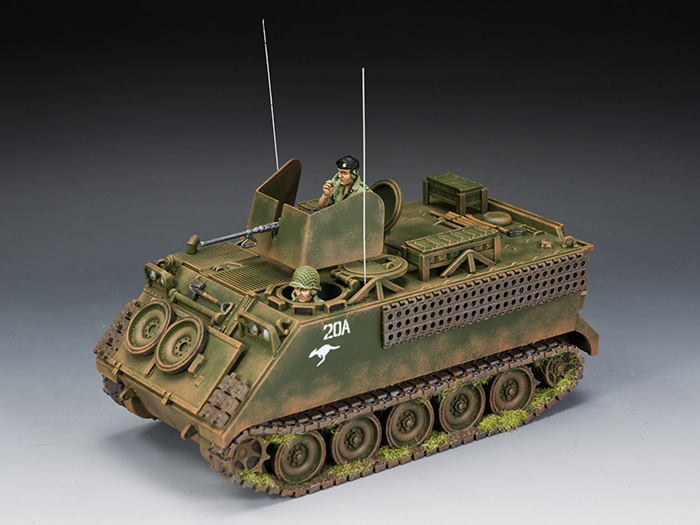 |
| VN144 Australian Army M113 (Two Niner Juliet) | 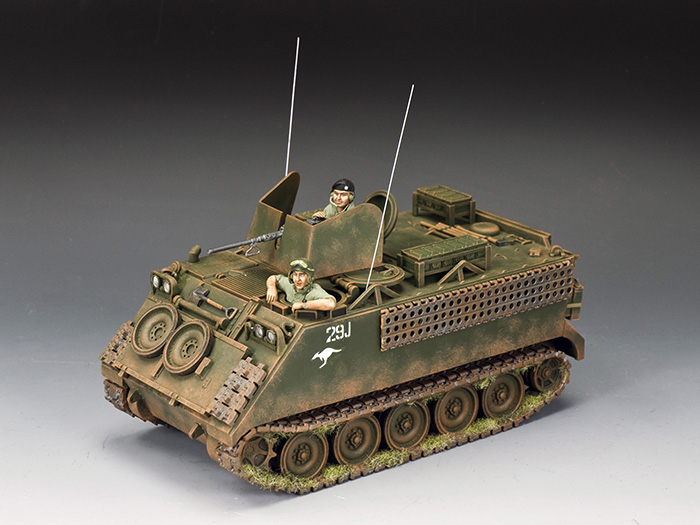 |
| WH099 The Fordwerke V3000 Truck | 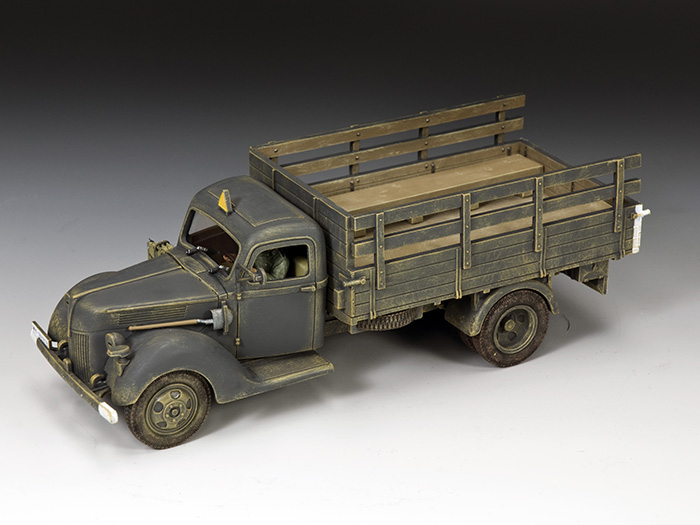 |
And that’s the story so far until March.In the meantime all the best and happy collecting!
Andy C. Neilson
Co-founder & Creative Director
King & Country Ltd.


